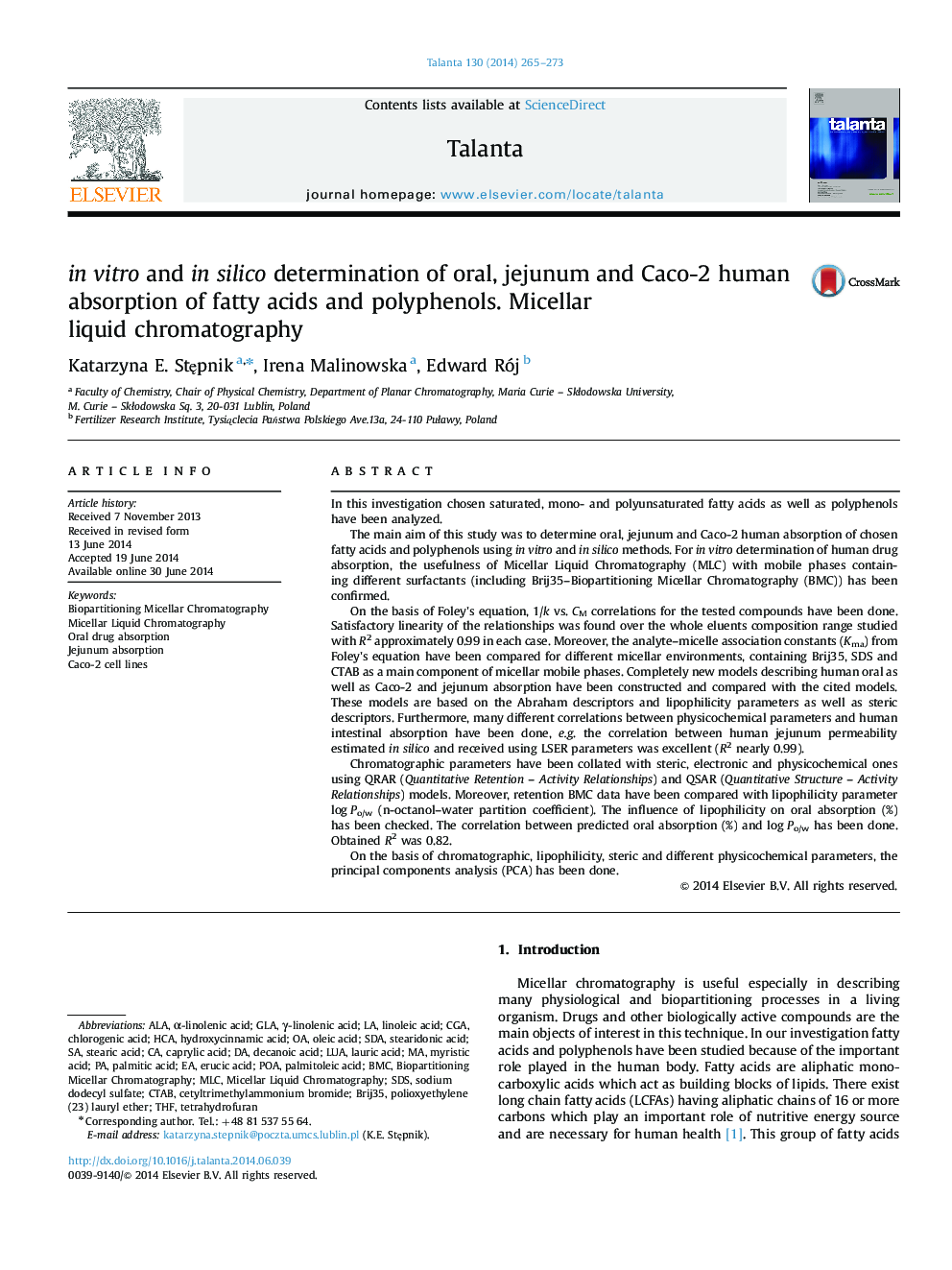| Article ID | Journal | Published Year | Pages | File Type |
|---|---|---|---|---|
| 1243589 | Talanta | 2014 | 9 Pages |
•Micellar chromatography of tested compounds.•BMC for predicting oral absorption.•The LSER of Abraham for predicting human intestinal absorption.•Jejunum and Caco-2 model absorption.
In this investigation chosen saturated, mono- and polyunsaturated fatty acids as well as polyphenols have been analyzed.The main aim of this study was to determine oral, jejunum and Caco-2 human absorption of chosen fatty acids and polyphenols using in vitro and in silico methods. For in vitro determination of human drug absorption, the usefulness of Micellar Liquid Chromatography (MLC) with mobile phases containing different surfactants (including Brij35–Biopartitioning Micellar Chromatography (BMC)) has been confirmed.On the basis of Foley׳s equation, 1/k vs. CM correlations for the tested compounds have been done. Satisfactory linearity of the relationships was found over the whole eluents composition range studied with R2 approximately 0.99 in each case. Moreover, the analyte–micelle association constants (Kma) from Foley׳s equation have been compared for different micellar environments, containing Brij35, SDS and CTAB as a main component of micellar mobile phases. Completely new models describing human oral as well as Caco-2 and jejunum absorption have been constructed and compared with the cited models. These models are based on the Abraham descriptors and lipophilicity parameters as well as steric descriptors. Furthermore, many different correlations between physicochemical parameters and human intestinal absorption have been done, e.g. the correlation between human jejunum permeability estimated in silico and received using LSER parameters was excellent (R2 nearly 0.99).Chromatographic parameters have been collated with steric, electronic and physicochemical ones using QRAR (Quantitative Retention – Activity Relationships) and QSAR (Quantitative Structure – Activity Relationships) models. Moreover, retention BMC data have been compared with lipophilicity parameter log Po/w (n-octanol–water partition coefficient). The influence of lipophilicity on oral absorption (%) has been checked. The correlation between predicted oral absorption (%) and log Po/w has been done. Obtained R2 was 0.82.On the basis of chromatographic, lipophilicity, steric and different physicochemical parameters, the principal components analysis (PCA) has been done.
Graphical abstractFigure optionsDownload full-size imageDownload as PowerPoint slide
